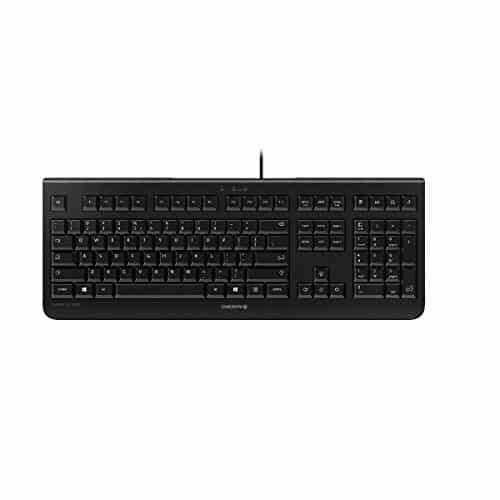Welcome to the first lesson in my economy picking series for GT. This lesson will help you understand the principles of economy picking and give you a practice routine for development. As the name suggests, economy picking is a system for increasing picking efficiency by making the most of directional motions between strings.
Economy picking differs from alternate picking in the way string changes are handled. Alternate picking uses opposing motions, where the pick stroke that completes one string in a stream of notes will be opposite to the pick stroke that begins the next string.
A down stroke on the third string, for example, would be followed by an upstroke if we immediately switched to the second string. The pick must pass down across the second string without striking it before doubling back for the up stroke.
When we economy pick, we still use down and up strokes along one string but take the shortest route when changing strings. A down stroke on the third string would be followed by another downstroke to the second string. This avoids passing across the second string. It’s like a mini-sweep and the most economical way to pick notes on different strings.
In a three-notes-per-string drill, like Example 1, alternate picking uses opposite pick strokes between strings and changes the strokes for each string as you add more (bars 1-3). With economy picking (bars 4-6), a single approach replaces the previous pick stroke flipping, so the pick never escapes the plane of the strings.
Players like Eric Johnson and Yngwie Malmsteen, use economy picking in one direction (ascending in their cases), while the godfather of economy picking, Frank Gambale, engineers his lines so that almost every string change occurs using the shortest distance between two points: sweeping.
For maximum flow, there are two principles to learn and apply: Rest Strokes and Picking Orientation. Both concepts will set up the pick for fast string changes.
Rest strokes
Sweeping a string change works best when the pick leaves one string and comes to rest directly on the next. The new string will sound when the pick is released from its resting position (like strumming a chord rather than picking individual notes in one direction).
Using separated, individual down strokes or up strokes in a row creates more work for the picking hand, compromising efficiency and speed. For our examples you must get used to resting the pick on each new string and releasing it as the lick continues.
Picking orientation

Economy picking works best when the pick is angled to suit the sweep direction. Angling the back end of the pick down towards the floor sets up a downward picking orientation for ascending lines (Figure A – above) and raising the back end of the pick lightly towards the ceiling (Figure B – below) sets up an upward picking orientation for descending lines.

Use the following drills to develop your ascending and descending economy picking, using rest strokes and picking orientation, and next month we’ll tackle direction turnarounds using three strategies.
On the record
Frank Gambale hit the scene with Brave New Guitar in 1986 with a fully-systemised command of economy picking. Developed back in his native Australia before moving to the US, Gambale mastered a picking system useful for scales and arpeggios alike, known as economy picking, sweep picking or speed picking.
Also check out the playing of Eric Johnson and Yngwie Malmsteen.
Example 1: Alternate vs economy
Compare the picking of bars 2-4 with bars 6-8 (considering the repeat markings). As you add more strings to the alternate picking option, the pick strokes from the previous bars are flipped. With economy, one approach fits regardless of using two, three, or four strings.
Example 2: Building ascending economy strokes
If you’ve never tried economy picking before, start with this C Major triad using an ascending sweep only. Angle the pick in the downward picking orientation and use a rest stroke from the sixth to the fifth string each time.
Example 3: Adding scale notes
Bar 1 outlines an ascending A Minor triad while bar 2 expands this into a larger A Minor scale fragment. Picking the string changes works in the same directional manner for both phrases.
Example 4: Using full scales
Building up to economy picking through full scales, bar 1 uses two strings and bar three uses three strings of an A Minor scale. After speeding this up, go back to alternate picking to see the fluidity you’ve accomplished with the economy pick strokes.
Example 5: Alternating between two and three-string groups
Here’s a higher scale fragment with a1n, 3E Phrygian tonality, alternates between two- and three-string groups.
Example 6: Picking odd numbers of notes
Since economy picking works so well with odd numbers of notes per string, these four A Minor patterns begin with either one or three notes on the lowest string and continue with three-notes-per-string shapes.
Example 7: Descending development
Let’s use descending triads to hone the upwaœrd sweeping motion. This ‘circle of 5ths’ progression isolates each string pair. Use upward picking orientation and upward rest strokes when you approach this example.
Example 8: Straight 16th-note playing
To make a steady picking line out of the previous triads, play straight 16th notes and monitor your timing.
Example 9: Descending scale fragments
These D Dorian fragments will prepare you for the continuous stream of notes in Example 10.
Example 10: Building picking stamina
Shortening the quarter notes from the previous examples will build stamina for your descending economy picking.
Example 11: Daily workout routine
Complete your economy picking routine by applying this picking form to any three-notes-per-string scale. Combine examples 2-11 for a 10-minute daily workout.


